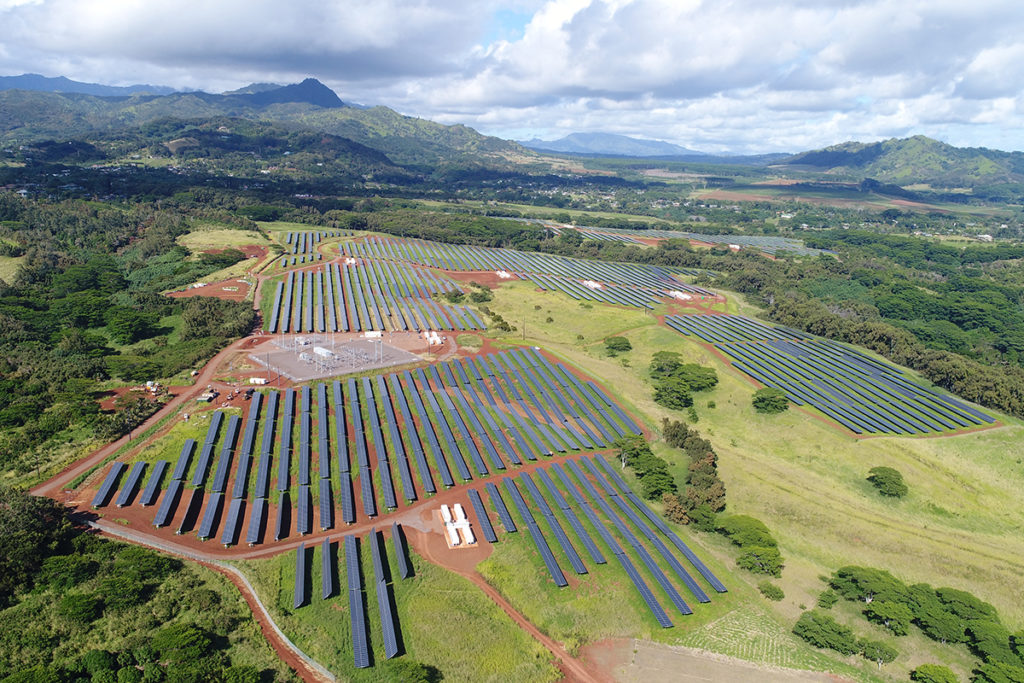
Kaua‘i Island Utility Cooperative reached a key renewables milestone recently, delivering periods of 100% fossil-fuel-free generation for several consecutive days in early December.
“We didn’t use a drop of fossil fuel for a cumulative total of more than 32 hours” during 11 days between Nov. 22 and Dec. 10, KIUC President and CEO David Bissell said. “We believe this is a unique accomplishment for a stand-alone electrical grid relying on small-scale renewable generation.”
Bissell said grid operators have routinely been able to meet 90% of demand and more with renewable assets during midday periods on sunny days for nearly two years, but hitting 100% repeatedly during the November-December stretch was a milestone. The co-op also cracked the five-consecutive-hour mark without fossil fuel generation on Dec. 10.
As Kauai’s only source of utility-scale electricity, KIUC serves nearly 40,000 meters. The island’s 100,000-plus residents and visitors receive renewable power from a combination of distributed and utility-scale solar, a biomass plant and several small hydro generation facilities.
KIUC’s board launched its renewable generation strategy in 2008, with a goal of reducing its dependence on fossil fuels, said Bissell. “Our cooperative is proudly leading the way to a 100% renewable future not just on Kauai but around the globe.”
This fall, KIUC added several renewable assets into its portfolio in 2019, including solar/storage facilities in conjunction with Tesla and an AES Distributed Energy facility. The projects simultaneously feed power to the grid and to the batteries for storage and use after sunset.
All told, the co-op has 64.3 megawatts of owned or contracted solar capacity, 16.3 MW of hydropower and 152 megawatt-hours of battery storage. Member-owned distributed generation totaling 31 MW, primarily from rooftop solar, is also available.
“We have to be mindful that our primary obligation is to provide safe, reliable power to our members at all times,” Bissell said. “Our operations personnel needed ample time to put all the necessary pieces into place before pushing the envelope to 100% renewable. Now we’re doing it routinely.”
Derrill Holly is a staff writer at NRECA.